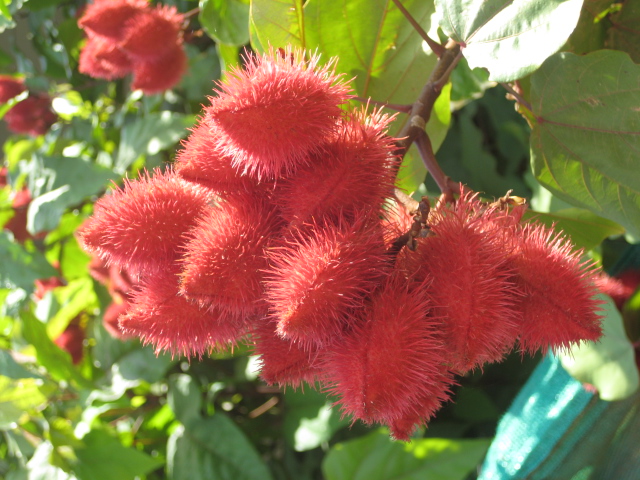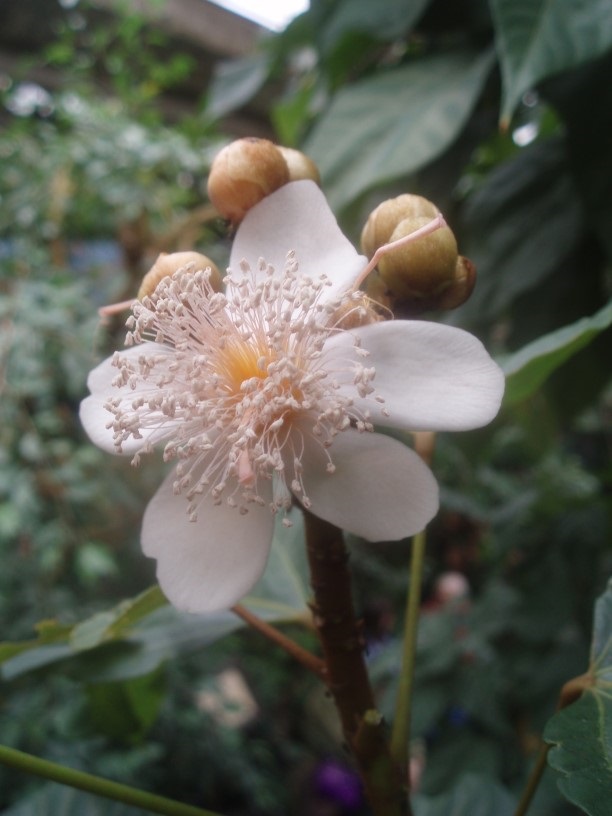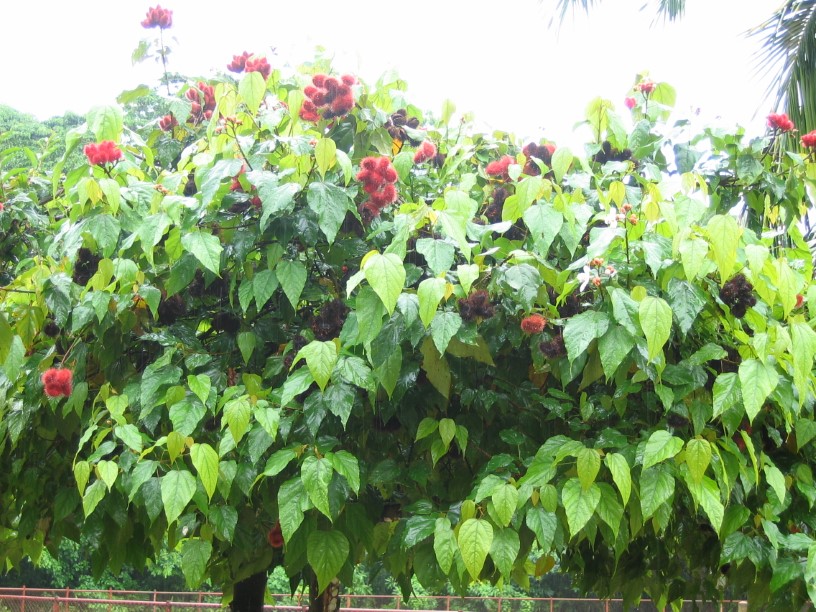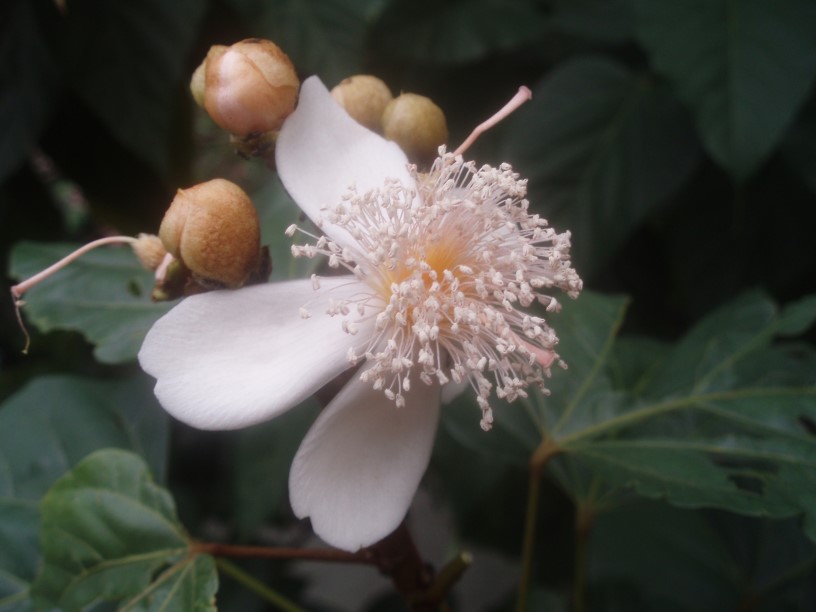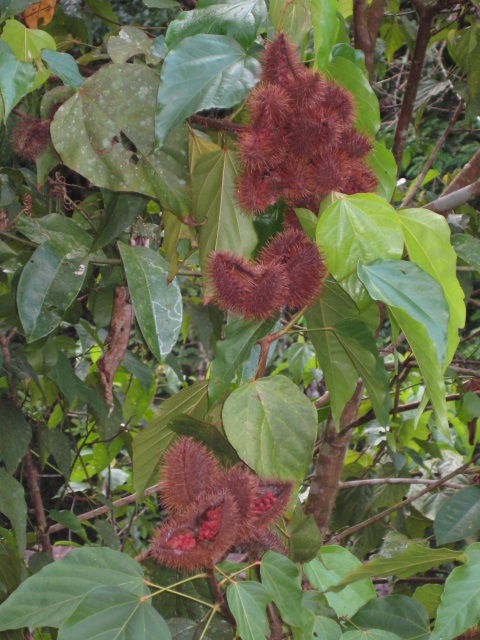Achiote
Bixa orellana
Lipstick tree family (Bixaceae)
Approved as a food dye
Annatto, or the lipstick tree, is large shrub from tropical South America. It was named after Francisco de Orellana, a Spanish conquistador who described how the native people used a red pigment derived from the seeds to decorate themselves. The Spanish exported annatto to Southeast Asia. The pigment is found in the seed coat, the husk, and has several different names: annatto, roucou and anchiote. Annatto pigment is used to give a yellow to red colour to food stuffs such as margarine, cheese and fruit juices. The code number of the natural pigment is E160b. In traditional cuisine annatto is used to give aroma and taste: ‘slightly peppery with a hint of nutmeg’.
Themes
The seeds are relatively tasteless. They are briefly steeped in hot oil which is then strained and cooled to be used as a flavouring in various dishes. The whole seeds can be ground into a paste with various other spices, which gives a more pronounced flavour. The seeds have a high nutritive value, containing a small amount of fatty oil (5%) and about 13% of protein. The ground seed is red and this can be used to colour foods. A yellow colour is obtained from the seed coat, and this is widely used as a colouring in margarines etc in the food industry. It is a harmless, non-carcinogenic dye.
The seeds contain a characteristic pleasant-smelling essential oil.
Bixa orellana is a bitter, astringent, purgative herb that reputedly destroys intestinal worms, lowers fever, improves digestion and has expectorant effects. It is also used in the treatment of various infections. Annatto paste filters out the ultraviolet rays of sunlight, thereby protecting the skin from excessive sunburn.
A red dye, known as annatto, is obtained from the fruit. The dye is used to colour cloth. It is applied to the skin to repel mosquitoes and other biting insects. It is also used in cosmetic products. The bark from the branches of the trees yields a water-soluble gum that is similar to gum arabic. A fibre for cordage has been obtained from the bark of the tree. The stems and branches are used for fuel. It is said that fire can be started by the friction of 2 pieces of the soft wood.
Details
| Description: | Shrub, 2 - 8 metres tall. |
|---|---|
| Distributions: | South and central america. |
| Habitat: | Coastal and inland thickets. tropical forests. |
| Year cycle: | Perennial (polycarpic evergreen) |
| Hardiness: | Warmer than 59 f (heated glasshouse - tropical) |
| Flowering period: | Juni |
| Flower color: | Pink |
| Fruiting period: | Juli - augustus |
| Fruit color: | Red |
| Notes on fruits: | Ovoid, 4 cm long, hairy fruits. |
| At its best: | Juni - augustus |
